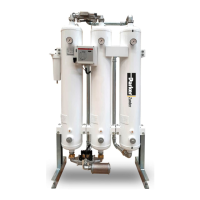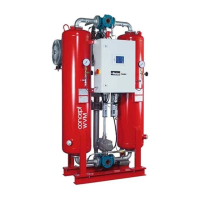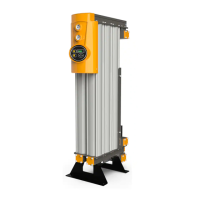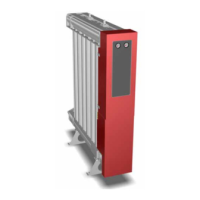EN | User Manual Technical product description
BSP-MT 10-95/D3 15
Adsorption
Via a compressor, humid compressed air is
supplied to the upstream lter. From here, the
compressed air ows upwards through the
absorption vessel, which is pressurised. In so
doing, the drying agent dehumidi es the air.
The dried compressed air is supplied to the
pipe network via the purifying vessel and the
downstream lter.
Here, adsorption is shown in the left
vessel.
Regeneration (running in parallel to the adsorption)
At the same time the other chamber is prepared for a renewed take-up of humidity. This
process is called regeneration.
The regeneration is subdivided into three phases: expansion, dehumidi cation, and pres-
sure build-up.
With the dewpoint-sensing control option, the regeneration phase is followed by a standby
phase.
Expansion phase
During the expansion phase the pressure in the
right chamber is released via the muf er down
to ambient pressure within just a few seconds.
The out ow of the compressed air becomes
noticeable due to a sudden powerful ow noise
at the muf er.
Dehumidifi cation phase
Prior to being released into the pipe network,
dried compressed air is bled by means of an
ori ce plate. This separate regeneration air ow
is fed through the depressurised chamber. The
humidity stored in the drying agent is taken up
by the air ow and expelled into atmosphere via
the muf er.
Here, regeneration is shown in the right
vessel.

